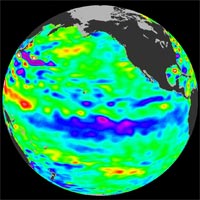REP & Solar ~ Terrestrial
Flux Tube Morphology
Ozone Status 2018 ~ EEP-NOx
More Coming Soon
REP - Relativistic Electron Precipitation
AARDDVARK Website
EEP - Energetic Electron Precipitation
Wikipedia
EPP - Energetic Particle Precipitation
Middle Atmosphere Group
Auroral Zone 1966
TIPER - Transmitter Induced Precipitation of Electron Radiance
VLF Stanford
Intro Movie
Digital switched ON:
Whitehaven, Cambria UK - October 17th 2007
The beginning of the analog switch to digital broadcast in the UK caused plasma waves that travelled south along the magnetic field lines resulting in a trail of electron precipitation, NO2 production and ozone depletion. I knew that if Broadcast Theory was really happening I would likely see an anomaly appear...It did! One day later on the 18th and took about a 13 days to travel around the southern polar vortex into full formation in the Pacific Ocean.
For more information on the digital switch and all the countries involved see here: http://en.wikipedia.org/wiki/Digital_television_transition
There are many countries that have begun the switch to digital which makes for a turbulent ozone layer. In fact the hole in the Antarctic stratosphere are the 5th largest ever despite lowering levels of CFC Countries like the US and the UK are the most important because they use far more broadcast than other countries. UK also broadcasts all analogue television signals using Long Wave FM for sound. LW FM was found to be a sensitive frequency in 1947 by Kenneth Norton FCC engineer, who used data from the Department of Defense with broadcast radio tests to determine FCC allocation of the frequency spectrum at the time.
Mid - October La Nina Persists
“The tropical Pacific Ocean remains in the grips of a cool La Niña, as shown by new data of sea-level heights from mid-October of 2007, collected by the U.S-French Jason altimetric satellite. This La Niña, which has slowly strengthened for the past nine months.”
(quoted from the NASA article)
http://ozonewatch.gsfc.nasa.gov/
http://www.digitaluk.co.uk/en.html
The Path of Energy
EEP-NOx - Missing driver in the Sun–Earth connection from energetic electron precipitation impacts mesospheric ozone
"Energetic electron precipitation (EEP) from the Earth's outer radiation belt continuously affects the chemical composition of the polar mesosphere. EEP can contribute to catalytic ozone loss in the mesosphere through ionization and enhanced production of odd hydrogen. However, the long-term mesospheric ozone variability caused by EEP has not been quantified or confirmed to date.
Here we show, using observations from three different satellite instruments, that EEP events strongly affect ozone at 60–80 km, leading to extremely large (up to 90%) short-term ozone depletion. This impact is comparable to that of large, but much less frequent, solar proton events. On solar cycle timescales, we find that EEP causes ozone variations of up to 34% at 70–80 km. With such a magnitude, it is reasonable to suspect that EEP could be an important part of solar influence on the atmosphere and climate system."
...read more
Kinds of Particle Precipitation
On November 2, scientists from NOAA and NASA reported that the maximum size of the 2018 ozone hole over the Antarctic was slightly above average.
According to the report, this year’s ozone hole reached an average area coverage of 8.83 million square miles (22.9 square km), almost three times the size of the contiguous United States. It ranks 13th largest out of 40 years of NASA satellite observations.
Ozone is a molecule comprised of three oxygen atoms. A layer of ozone high in the atmosphere surrounds the entire Earth. It protects life on our planet from the harmful effects of the sun’s ultraviolet rays. First detected in 1985, the ozone hole is not technically a hole where no ozone is present, but is instead a region of exceptionally depleted ozone in the stratosphere over the Antarctic. This region of depleted ozone typically begins to appear at the beginning of Southern Hemisphere spring (August–October). ...read more
Ozone layer continues to thin over Earth's populated areas ~ Feb 2018
The ozone layer that protects us from harmful ultraviolet radiation continues to thin over populated areas of the world, a new study warns.
Scientists say the layer is in better shape, however, over the North and South Poles.
Ozone has been declining globally since the 1980s. While the banning of the chloroflourocarbons that cause the thinning is leading to a recovery at the poles, "the same does not appear to be true for the lower latitudes," study author Joanna Haigh of Imperial College in London said.
"The potential for harm in lower latitudes may actually be worse than at the poles..The decreases in ozone are less than we saw at the poles before the Montreal Protocol was enacted, but UV radiation is more intense in these regions and more people live there." ...read more
World Meteorological Organization 2018
Scientific Assessment of Ozone Depletion:
The Antarctic ozone hole is recovering, while continuing to occur every year. As a result of the Montreal Protocol much more severe ozone depletion in the polar regions has been avoided.
Outside the polar regions, upper stratospheric ozone has increased by 1–3% per decade since 2000.
No significant trend has been detected in global (60°S–60°N) total column ozone over the 1997–2016 period with average values in the years since the last Assessment remaining roughly 2% below the 1964–1980 average.
...read more
Scientific Assessment of Ozone Depletion ~ July 2018
World Meteorological Organization
Ozone hole slightly above average ~ Nov 6th 2018
Since the WMO Ozone Depletion report 58 came out in July 2018 claiming signs of repair due to the Montreal Protocol.. we continue to see conflicting reports saying that all areas of our ozone layer are still getting worse. According to NASA satellites, the Antarctic hole is worse this year and mid latitudes continue to thin over populated areas.
CEDAR Prize Lecture | Whole Atmosphere Community Climate Model-eXtended (WACCM-X)
EEP-NOx is the hottest topic at the last International HEPPA-SOLARIS workshop with an international effort to include EEP-NOx into the WACCM-X climate model for IPCC integration:
http://www.cpe.vt.edu/heppa.solaris.2018/HEPPA-SOLARIS-2018_Abstracts.pdf
Recorded at the 2018 CEDAR workshop in Santa Fe, NM.
Whole Atmosphere Community Climate Model-eXtended (WACCM-X): Development, Validation and Capabilities by Hanli Liu (High Altitude Observatory/NCAR)








